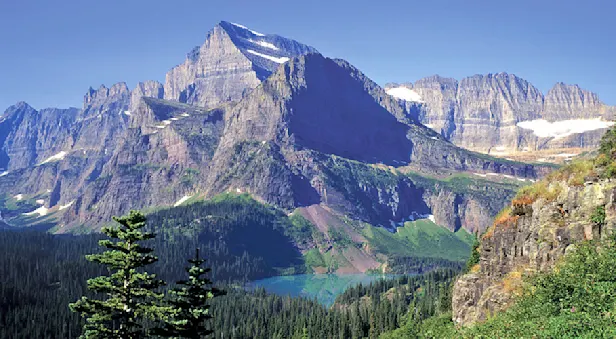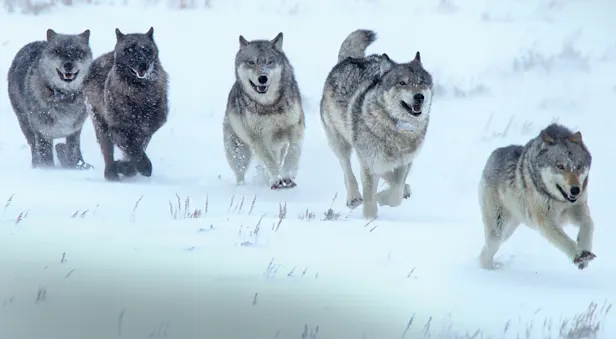Know Before You Go
Grizzly Bear Facts | Glacier & Waterton Wildlife Guide
WHICH IS IT—BROWN OR GRIZZLY?
There is often confusion about what to call these bears, with the words “grizzly” and “brown” often used interchangeably.
Grizzly bears are a subspecies of the brown bear, so it is correct to call a grizzly a brown bear, but it is not always correct to call a brown bear a grizzly. The difference is regional. In coastal Alaska and British Columbia, they are called brown bears, and in interior areas like Glacier and Waterton, they are generally called grizzly bears. This name comes from the grizzled gray and brown coat that interior brown bears often display.
In the United States, grizzly bears are only found in parts of Montana such as Glacier National Park, the Greater Yellowstone Ecosystem, parts of Idaho and occasionally in northern Washington. While they once roamed as far south as central Mexico, the fear invoked by their size and power led to eliminating them from much of their original range. Researchers estimate that Glacier National Park provides habitat for nearly 300 grizzly bears, and neighboring Waterton Lakes National Park in Alberta, Canada is home to more than 60 resident grizzlies.
PHYSICAL CHARACTERISTICS
Grizzly bears are much larger than black bears, weighing up to 1,000 pounds. The average weight in Glacier is 300-440 pounds for males, and 250-280 pounds for females.
Grizzly bears have a large hump on their shoulders, which houses strong muscles that help them dig for roots, mushrooms and other foods. They also have long claws (up to 4 inches long) to help with these excavations. Their face is often described as “dish-shaped” to distinguish them from the elongated face of a black bear.
BEHAVIOR & FEEDING HABITS
Grizzly bears are solitary animals, except when breeding or when mothers are raising their young. They wander over many square miles to forage for food. In Glacier, more than 90% of their diet consists of grass, roots, berries, pine nuts, acorns, mushrooms, insects and larva. They will also eat flowers, leafy green plants, fruit, honey, bark and small and large mammals. These omnivores can be found feeding on huckleberry bushes in mountain meadows and digging up glacier lilies in early summer. These foods are critical for the bears to build their fat reserves in preparation for hibernation. Warmer temperatures in recent years have allowed diseases and beetles to spread, wiping out pines and greatly reducing the availability of one of these omnivores important food sources, whitebark pine nuts. The decline of these vital crop and habitat fragmentation caused by human development is leading to more conflicts with humans as the grizzlies look for alternative sources of food, like trash dumps.
On Glacier's east side, some grizzlies spend all summer in the wildflower-covered valleys and aspen groves, returning to the high country only to hibernate. Others spend springtime in the lowland meadows, savoring the tender young greens, but then return to the high country for the rest of the growing season. As with black bears, they enter a period of hyperphagia in the months leading up to hibernation and put on several pounds of fat every day. If a female has a fertilized egg, implantation in the uterus will be delayed until December and will only occur if the mother has gained enough weight to support herself and her babies until the spring.
Once the hungry bears leave their winter dens, the carcasses that were left behind either by harsh winter conditions or wolf kills add much-needed protein to their diet. They will also occasionally hunt young deer or elk that are still small and vulnerable. As the summer progresses and young elk gain in strength and speed, they switch their feeding to easier prey of grubs, mushrooms, plants and berries.
GRIZZLY-WOLF INTERACTIONS
For the most part, grizzlies and wolves avoid each other. However, wolf kills are an important source of protein for grizzly bears, as wolves are far better hunters. Because of this, the reintroduction of wolves to the park has been beneficial to grizzly bears. If a bear decides to take over a kill from a pack of wolves, it is very unlikely that the wolves will be able to displace the bear unless there are cubs present. A mother with cubs will often leave a kill to protect her young.
See Wildlife on Our National Park Adventures

Glacier & Waterton: An International Treasure
Sheer-walled peaks, icy lakes, alpine valleys, summer wildflowers and magnificent wildlife! Discover all the wonders on both sides of the border with naturalist guides who know this land intimately.


Yellowstone Winter Wildlife Photo Expedition
Capture frosty wildlife images in winter solitude in Yellowstone and Grand Teton—go deep into the silent wilds by snowcoach, shoot dramatic landscapes, and photograph roaming elk in Jackson Hole.
























